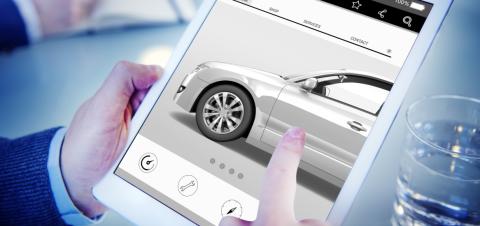OEMs Pushing Online Sales with New Platforms

The way consumers shop has drastically changed over the past few years, especially through the pandemic. But what happens when rapid change becomes a potential burden? Dealers are pondering the future of OEM direct sales and what it means for their profits and their businesses.
The current state.
Many automakers are choosing to create or enhance current direct sales platforms. Based on market research, automakers claim there is higher customer satisfaction with online car buying platforms than through traditional dealerships. They use this paired with the fact that there is low inventory on dealer lots to push the idea of more direct sales. A car is a large purchase, and consumers are trying to avoid dealer markups by going online. They think that if they order online, they can get exactly what they want. Also, electric vehicles are strengthening this push for direct sales by OEMs after companies like Tesla, Rivian, and Lucid have already proved their popularity.
What isn’t being talked about is that through direct sales, consumers lose the local, personal customer service. They lose their advocates. They don’t know that they could order their dream car through a dealer who knows what they’re doing and can ask the right questions instead of the buyer clicking buttons, hoping they selected the right options for their needs.
GM launches a used car marketplace.
Following in the footsteps of Carvana and Vroom, OEMs think they are being competitive by launching their own digital marketplaces.
GM launched CarBravo, which allows customers to choose from thousands of used vehicles at participating dealerships or cars exclusively owned by GM. Basically, the goal is to have all GM dealer inventory online and available for order by anyone. Buyers have the choice of ordering online or finding a car at a local dealership to purchase in-person. They are adding more dealerships as the platform grows.
CarBravo and CarMax seem to be comparable competitors when it comes to online used car shopping, and GM has goals to surpass CarMax. To stay on par with other platforms, CarBravo includes things like a 6-month warranty, high-quality inspections, vehicle history reports, and roadside assistance.
GM worked alongside dealers when creating this service to make sure every detail was right. They include dealers in the process, allowing customers to visit dealerships if they prefer. This service gives buyers the online flexibility they want without excluding dealerships and allowing them to stay in control of their profits.
People can choose to pick up their vehicle at the dealership or have it delivered to their home. Another hope for a platform like CarBravo is to invite new customers to the brand and have something for everyone in the used car market.
Ford tried a similar approach.
About a year ago, Ford launched the ‘Ford Blue Advantage’ platform to buy used vehicles online. Like GM, they also listened to dealers' opinions as they created and piloted the service. Ford’s sales did increase following the launch. In fact, over half of Ford’s 3,000 dealerships have signed up to participate in the platform and overall, it has helped their revenue.
Volvo plans to go fully digital. (aka switching to an agency model)
Volvo created “Volvo Selekt Direct” to begin in the UK selling used cars. Volvo has goals of transitioning to 100% online within a decade for both new and used. The brand credits its car subscription service in aiding this transition.
Used cars continue to be hot.
Automakers are capitalizing on the used car situation. Amid shortages, these platforms are appealing to buyers who feel hopeless looking for a car they cannot find. With pretty good return policies in place, buyers also like the fact that they can return an online purchase with no questions asked.
As we’ve been saying for years, having a digital purchase option is almost necessary now to appeal to a large chunk of buyers, but not everyone is comfortable purchasing something so expensive online. The majority of people are still heading to a dealership.
So… what about dealership sales?
A few things to point out here - online car buying has been showcased as a fast, efficient, and smart way to do things. What they don’t advertise is the long wait times for vehicles to arrive, zero negotiation, and the lack of a customer advocate. In fact, car prices could increase and trade-in values could decrease within that time frame. At a dealership, the customer knows the price, trade-in value, warranty information, and other purchase-decision factors all at once on the purchase date.
Online car buying is here to stay, and it can be a useful tool to dealerships if boundaries aren’t crossed by the OEM. Giving consumers a huge virtual marketplace is great, but from there, they should be directed to the selling dealership for the completion of the purchase.
Long-standing legislation to protect dealers from being booted out still applies, even though some OEMs are trying to play a work-around game. Dealerships take care of so much of the tedious tasks involved in purchasing and give the personal customer service that manufacturers just can’t do through online platforms.
As we see more and more OEMs opting for direct sales, the fate of dealership sales is unknown. Dealers must stick together to prevent an agency model that would take away control of their businesses and their profits. If OEMs work WITH dealers to continue designing online platforms as car-selling tools, not the end-all, be-all, then there is hope. All parts of the industry must work together to be successful. Let’s let dealerships do what they do best, sell to the consumer, and OEMs can stick to what they do best, make quality products and advertise the brand.






